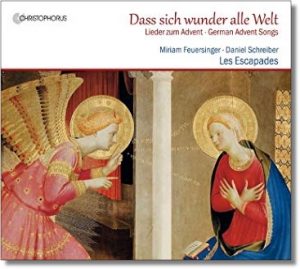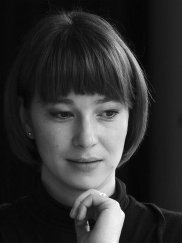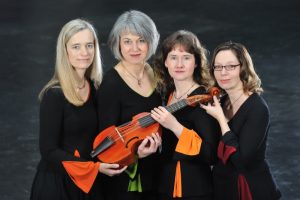
What might one expect from an album with the subtitle German Advent Music? From what genealogy does this music emerge?
In Music in Early Lutheranism, an introductory guide to the tradition that gave the Church some of its most enduring musical achievements, Carl Schalk writes:
The first two centuries of the Lutheran Reformation — the period between Martin Luther and Johann Sebastian Bach — produced a singularly impressive body of music written specifically for the worship life of the church. Less often noted is that this music developed as a clear result of Lutheranism’s understanding of worship and the important place it gave to the art form it considered next in importance to theology. To explore the music of Lutheranism’s early years is to see most clearly how what Lutherans thought about music in the life of the church was given shape and form in the actual music of those times.
The title of this album — Dass sich wunder alle Welt — is a phrase from Martin Luther’s Advent hymn, Nun komm der Heiden Heiland (discussed here and here in my introductions to Bach’s Advent cantatas with the same name). It could be translated as “so that all the world is amazed,” an apt summary for the response to the coming of Messiah. And many of the composers represented on this recording are part of that confident Lutheran tradition between Luther and Bach, a tradition in which Advent seems to have been a much prized occasion for musical creativity (although there are several non-Lutherans here, and one or two non-Germans as well).
The music presented on this album captures a sense of quiet amazement. Where some music for Advent evokes a bold fanfare for a coming King, the music here feels more intimate and humble. For the most part, the anticipation is subdued and reflective rather than demonstrably thrilling. That spirit is aided by the spare musical forces employed: two solo voices, four string players, and a small organ. Soprano Miriam Feuersinger and tenor Daniel Schreiber are joined by the viola da gamba consort Les Escapades.

I first took note of Feuersinger’s rich voice in solos in Bach cantatas performed with the Netherlands Bach Society. Specializing in the German Baroque repertoire, she has also recorded albums of solo and duet cantatas by Christoph Graupner (1683-1760) and by Johann Rosenmüller (1619-1684).
Daniel Schreiber’s singing has already been (briefly) presented on these pages: he sings with the Munich-based ensemble Die Singphoniker, whose enchanting recording of the wistful folk tune, Innsbruck, ich muß Dich lassen, is presented here (as part of the background to the eucharistic hymn, “O food of men wayfaring”).

Throughout this album, short solos and duets alternate with instrumental variations; most tracks are under two minutes in length, many shorter than a minute. The effect of the entire musical program depends on 1) listening to every track the musicians have thoughtfully selected, and 2) not shuffling the tracks.
And there are lots of tracks, arranged in four large sections corresponding to the four Sundays in Advent. Not surprisingly, Luther’s durable melody Nun komm der Heiden Heiland is heard more than once here, with settings by almost a dozen different composers including Michael Praetorius, Samuel Scheidt, and Johannes Eccard. Also heard is a melody and text familiar in our parish, since we are singing it (in an English translation) as our sequence hymn during Advent, “Creator of the stars of night.” Settings of this ancient hymn by three composers are present here, including these stanzas by Orlande de Lassus (c. 1532-1594).
As you can hear from this example, the spirit of this performance is colored significantly by the sonorous aural texture of the viola da gamba (Italian for “knee violin,” as the instrument is played held between the legs). The viola da gamba comes in seven different sizes, several of which are played by the ensemble on this recording. All sizes have more strings than modern bowed stringed instruments, and like the guitar (and unlike violins, violas, cellos, and double basses) the necks have frets.

These instruments were a prominent part of musical life in the 16th and 17th centuries, when most of the music in this album was composed. In the performance in the example above, the instruments play parts originally assigned for singers by Lassus, but at the time, substituting a player on viola da gamba for a singer was not uncommon.
The recording opens with a setting of a simple Advent collect, Lieber Herre Gott (the text is probably by Luther), which establishes the context for all of the music that follows: “O dear Lord God, awaken us, that we may be ready when your Son comes, to welcome him with joy, and to serve you with a pure heart, through the selfsame your beloved Son, Jesus Christ. Amen.” A number of composers have set this short prayer to music, including Johann Rosenmüller (1620-1684).
I have been amassing recordings of music for Advent and Christmas since the late 1960s, but this simple Advent prayer by Rosenmüller was new to me. The fact that this collect opens the album seems to demonstrate the lingering awareness that this music is essentially liturgical.
The closing track was also unfamiliar to me, or at least the scoring by Franz Tunder (1614-1667) was new, and a delight to discover. The text and the tune, however, were old favorites: we will be singing this melody and these words (in translation, of course) on the second Sunday in Advent as the closing hymn in our Holy Communion service: “Wake, awake, for night is flying!” The score to this stirring hymn by Lutheran theologian Philipp Nicolai (1556-1608) was originally published as an appendix to a devotional book published in 1599 entitled Freudenspiegel des ewigen Lebes (Joyful Reflection of Eternal Life). Tunder’s arrangement for strings and solo voice is a fitting conclusion to this joyous recording.
Dass sich wunder alle Welt: German Advent Songs is on the Christophorous label.
It is available on CD and MP3 from Amazon (included with Amazon Unlimited)
and from the iTunes Music Store.